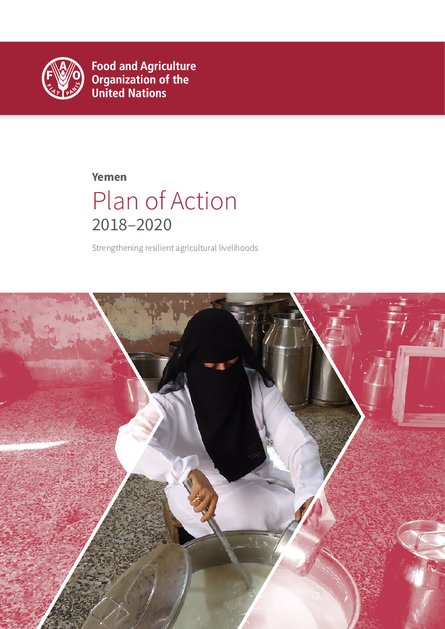
Yemen is experiencing the world's worst humanitarian crisis. As the crisis enters its fifth year, conflict, severe economic decline and collapsing essential services have taken an enormous toll on the population, exacerbating existing vulnerabilities. The United Nations (UN) has declared the last three years of the crisis as a system-wide ‘Level 3’ humanitarian emergency. Level 3 responses are activated in the most complex and challenging humanitarian emergencies, when the highest level of mobilization is required across the humanitarian system. Even before the conflict escalated, the country suffered high levels of poverty, food insecurity, undernutrition and malnutrition, water shortages and land degradation. Yemenis are also facing armed conflict, displacement, risk of famine and disease outbreaks.
Since 2015, the Food and Agriculture Organization of the United Nations’ (FAO’s) support in Yemen has included key agricultural inputs, cash-based transfers and training, which has contributed to more than 2 million resource-poor households improving their food security and nutrition and strengthened their ability to cope with crises. In addition to short-term activities under UN-led humanitarian response plans, longer-term interventions are required to achieve lasting, sustainable improvements in food security and nutrition. FAO’s Plan of Action 2018–2020 serves as a strategic planning tool to guide FAO operations in Yemen through food security, nutrition and agricultural livelihoods programmes and projects. This document will also inform planning and programming for emergency and recovery support to Yemen’s agriculture sector.
The overall goal of the three-year Plan of Action is to make a significant contribution towards improving food security and nutrition and strengthening the resilience of vulnerable rural and peri-urban households while restoring the agriculture sector of the country. As a dynamic document, the Plan of Action will be implemented through a flexible twin track approach that can be tailored to its target areas for different types of intervention based on the conflict dynamics and changing circumstances in the country over the next three years. Strategic decisions on targeting will be informed by conflict analysis and regular conflict monitoring that ensures conflict-sensitive interventions.
Links
Resource collections
- UN Habitat - Urban Response Collection
- Urban Response - Urban Crisis Preparedness and Risk Reduction
- Urban Response Collection - Community Engagement and Social Cohesion
- Urban Response Collection - Economic Recovery
- Urban Response Collection - Environment and Climate Change
- Urban Response Collection - Housing, Land and Property
- Urban Response Collection - Urban Crisis Response, Recovery and Reconstruction
- Urban Response Collection - Urban Resilience